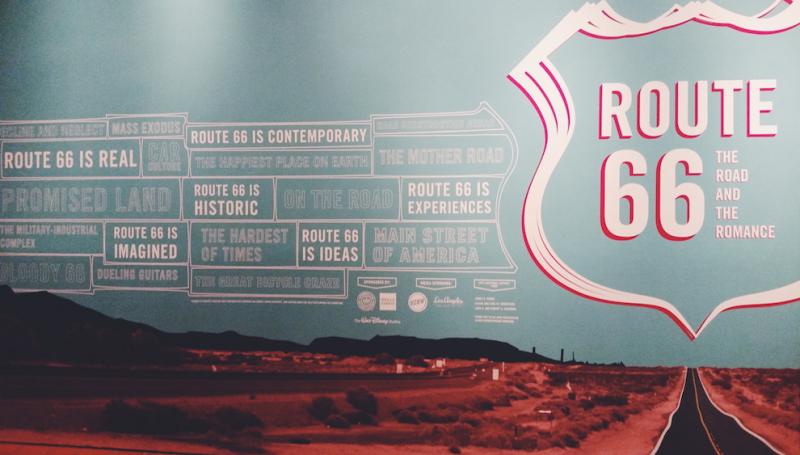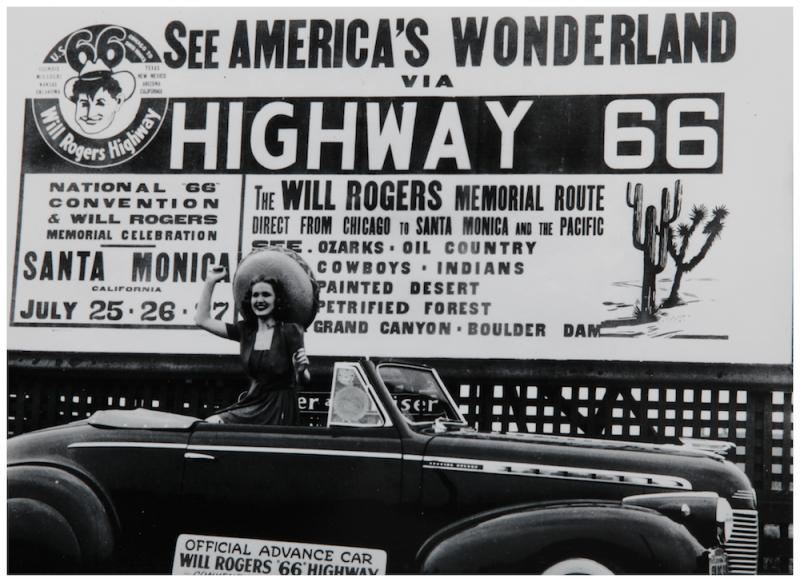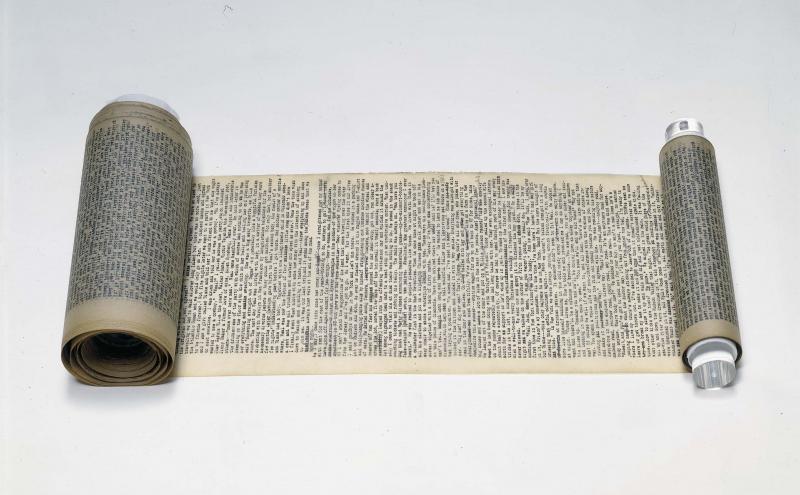Revitalizing Route 66 For A New Generation

In the minds of many Americans, Route 66 exists as a relic, both literally and figuratively. The iconic 2,451 mile route represents a way of life and a pace of living that are now long gone. With highways decommissioned decades ago and modern life more concerned about efficiency than ever before, some people would have no problem saying that the place of Route 66 belongs firmly in the past of America's cultural landscape.
It does, however, have a storied past, one which the Route 66: The Road and Romance exhibit at The Autry National Center of the American West aims to capture and retell through what is easily the most comprehensive single collection of memorabilia on the subject. Although Route 66 was established way back in 1926, Autry visitors may remember some of its more recent history first-hand—from the road signs and rest stops, to memories made on family vacations driving to destinations such as Las Vegas and Disneyland.
For those who remember what Route 66 once was, the nearly 300 items of rare and one-of-a-kind memorabilia on display at the exhibit should certainly invoke some nostalgia.
"Exhibits typically come about in multiple ways—either you develop a narrative, or you have a very substantial collection of pieces," says Jeffrey Richardson, curator of the Route 66: The Road and the Romance exhibit. "This exhibition was a combination of the two. We wanted to tell a very distinct and unique story, and this is reflected in the selection of artifacts.
SEE ALSO: Changes Coming To LACMA
Charting everything from the days of the Dustbowl to the rise of Disneyland, the exhibit features memorabilia such as highway signage and letters from travelers, vintage slot machines and a giant Neon sign.
The Autry Museum is, after all, dedicated to exploring and chronicling the history of the American West, and the Route 66 exhibit, winding chronologically and geographically through the history of the highway, unfurls the story of the road that was the gateway to the West.

Although one may assume that the target demographic of The Autry’s Route 66: The Road and the Romance exhibit may be older people with their own memories of the route, on a recent Saturday afternoon, The Autry’s Route 66: The Road and the Romance exhibit was bustling with visitors of all ages, humming with voices excitedly commentating on the museum’s memorabilia spanning over a century of American history. The exhibit’s June-January run and the respectable daily turnout suggest that there is indeed a resurgence of interest in the most iconic highway in America.
"One thing that I've been a little surprised at is the appeal of the exhibit for school kids coming through," says Richardson. "The exhibit is very popular across age groups."
Indeed, Route 66 iconography has cropped back up in film, photography, music and other creative pursuits, including, most notably, Pixar's "Cars." Motels and gas stations are being revitalized along the route, and Illinois has even installed electric vehicle charging stations for those who want to travel sustainably. There are now numerous marathons and music festivals named for Route 66, and a remake of the travel show "Route 66" is in the works. Part of The Autry's Route 66 exhibit programming was even crowd-funded on Indiegogo, suggesting that older generations are still interested in keeping the highway's history alive, and that younger generations are drawn to it, as well.
READ MORE: "Hollywood Costume" Exhibition Is A Cut Above
"For a certain generation, Route 66 was something they grew up with, that generation helped keep Route 66 alive in darker periods," says Richardson. "For me, it was somewhat surprising to see the reception of the exhibit by those under 25, who understand that this is a highway that is quite relevant, and that it's not just where we've been, it's where we're going."
Winding from Chicago to a scenic end in Santa Monica, Route 66 experienced a heyday following the Dustbowl and then World War II, when hundreds of thousands of Americans moved West for fertile soils, the lure of show business and a land of opportunity. Motels, gas stations and other businesses boomed along the highway; even the government invested in order to make the route drivable.
But once airline travel became commercialized and efficiency increasingly emerged as a way of life, Route 66 became more about the destination than the journey, and leisurely drives declined in popularity. By the mid 1980s, the last stretch of Route 66 had been bypassed, and the highway was officially decommissioned.
Despite falling into disrepair, Route 66 remains the lifeblood coursing through Americana, and in particular American creativity, as we know it today.

Perhaps the most unique pieces of Route 66 history on display are the numerous emblems of the iconic creativity borne out of the magic and mystery surrounding the road, the stories and songs, people and places that helped to create the identity of the American West both in reality and in imagination. The exhibit's creative offerings include a first edition copy of "The Grapes of Wrath;" guitars once owned by famed Western musicians Roy Rogers and Woody Guthrie; the original handwritten lyrics to Bobby Troup's "Route 66" and the 120-foot long original manuscript of Jack Kerouac's "On the Road," easily the defining piece of literature written on and about Route 66.
Due to the age and fragility of many of the pieces in the exhibit (like the Keruoac manuscript), most of them have limited loan periods, and thus, despite offers for the Autry to take its Route 66 exhibit around the world, this particular collection of memorabilia will likely not appear altogether in one place again. Richardson said that he hopes that the exhibit, and its proximity to the route, will not only educate but inspire visitors to see Route 66 for themselves.
"We are literally the end point of Route 66 here in Los Angeles, and we hope that some people will be inspired to leave the Autry, get in their cars, and experience Route 66," Richardson says. "The idea is that Route 66 is alive and vibrant today."
SEE ALSO: On A Road Trip To Los Angeles, Pit Stops Left Behind
It’s still possible to drive much of Route 66 from Chicago to Southern California, and businesses along the route have popped back up to accommodate renewed interest in the highway. Government organizations, entrepreneurs and Route 66 enthusiasts are all actively working to preserve and restore the highway.
Despite the fact that airline travel is cheaper and easier than ever before, a renewed cultural interest in Route 66 seems to signal a yearning for a slower pace, and interest in a simpler time in American history that preservationists hope will actually be reflected in tourists' travel habits.
"Route 66 is the quintessential American experience, it really takes you through the heartland of America and off the beaten path," says Richardson. "There really has been an uptick in the popularity of Route 66, in people seeking out experiences that aren't your typical pre-packaged trips."
Now that the exhibit's run is coming to a close, Richardson said that he hopes its run has given visitors hope about the future of Route 66, and perhaps preserving similar pieces of history across the country.
"We want people leaving the exhibition to understand that Route 66 is not just a part of America's past, but also part of America's future," says Richardson. "Route 66 does remain part of America's cultural history."
Route 66: The Road and the Romance costs $6 for students, $10 for the general public, and runs through Jan. 4, 2015.
Reach Staff Reporter Olivia Niland here. Follow Olivia Niland on Twitter @olivianiland.



